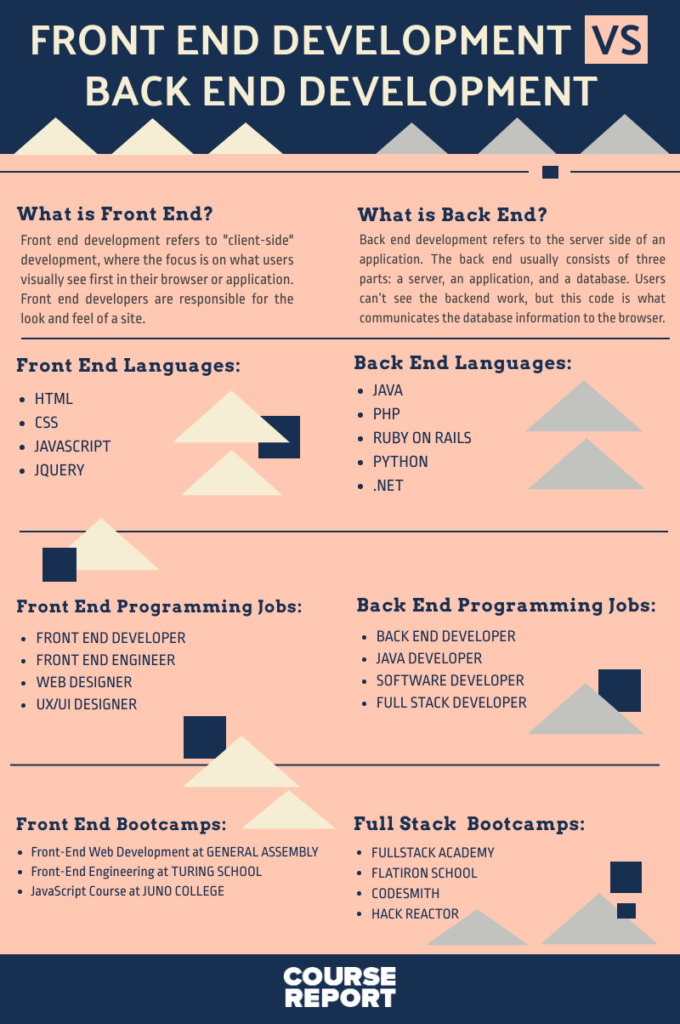Back-end development plays a crucial role in powering modern web applications and services. As businesses and user bases grow, developers often encounter scalability issues that hinder the seamless performance of their systems. In this article, we will delve deep into the world of Scalability Issues in Back-end Development and present innovative solutions to handle growth effectively.
What is Scalability in Back-end Development?
Scalability refers to the ability of a system to accommodate increasing demands gracefully. In the context of back-end development, it’s the capability to handle higher user loads, increased data volumes, and additional functionality without compromising performance. Let’s explore the various challenges and solutions related to Scalability Issues in Back-end Development: Solutions for Handling Growth.
Understanding the Impact of Scalability Issues
Identifying Bottlenecks in the System
Scalability issues can manifest in various forms, such as slow response times, frequent downtime, and decreased system performance. Identifying bottlenecks within the system is crucial to understanding the root cause of these issues. By using proper monitoring and profiling tools, developers can pinpoint the areas that require optimization.
The Cost of Ignoring Scalability
Ignoring scalability issues can lead to dissatisfied users, loss of revenue, and damage to a company’s reputation. In today’s competitive digital landscape, users expect applications to be reliable and fast. Failure to address scalability concerns can result in significant setbacks for businesses.
Strategies for Improving Back-end Scalability
Also Read: Unlocking Data Insights – Positive Data Analysis and Visualization
1. Horizontal Scaling vs. Vertical Scaling: Choosing the Right Approach
When facing scalability challenges, developers have two primary options: horizontal scaling and vertical scaling. Horizontal scaling involves adding more servers or instances to distribute the load, while vertical scaling requires upgrading the existing server’s resources. Evaluating the specific needs of the application and its growth potential will help determine the most suitable approach.
2. Microservices Architecture: Embracing Modularity
Microservices architecture breaks down applications into smaller, independent services that communicate with each other through APIs. This approach allows teams to develop, deploy, and scale individual components independently, making it easier to manage the growth of the application as a whole.
3. Caching Mechanisms: Boosting Performance
Implementing caching mechanisms can significantly improve back-end performance. By storing frequently accessed data in cache memory, the system can retrieve information faster, reducing the load on the database and overall response times.
4. Asynchronous Processing: Handling Heavy Workloads
Scalability challenges often arise when dealing with time-consuming tasks, such as file uploads or data processing. By adopting asynchronous processing, where certain operations are executed in the background, the main application can remain responsive, even during heavy workloads.
5. Load Balancing: Distributing Traffic Effectively
Load balancing is a technique that evenly distributes incoming network traffic across multiple servers or resources. This ensures that no single server becomes overwhelmed, optimizing resource utilization and enhancing overall system reliability.
Overcoming Database Scalability Challenges
1. Sharding: Partitioning Data for Efficiency
Sharding involves breaking a large database into smaller, more manageable pieces called shards. Each shard contains a subset of the data, allowing for better distribution and more efficient querying. Properly implemented sharding can significantly enhance database performance and scalability.
2. Indexing Strategies: Optimizing Query Speeds
Creating appropriate indexes on frequently queried fields can dramatically improve database performance. Indexes allow the database system to locate data more quickly, reducing query execution times and enhancing overall responsiveness.
3. NoSQL Databases: A Flexible Alternative
Traditional relational databases may struggle to handle massive amounts of unstructured data. In such cases, NoSQL databases offer a flexible solution, as they can store and retrieve data without requiring a predefined schema. Choosing the right database type is essential to ensure optimal scalability.
Addressing Security Concerns in Scalable Back-end Systems

Also Read: Webstock In Back-end Development
Also Read: Challenges in Back-end Development
1. Authentication and Authorization: Protecting User Data
As applications scale and attract more users, ensuring proper authentication and authorization becomes critical. Implementing secure authentication mechanisms and granular access controls helps protect sensitive user data from unauthorized access.
2. Data Encryption: Safeguarding Information
Encrypting data both at rest and during transmission is essential to prevent data breaches and unauthorized data interception. Strong encryption algorithms add an extra layer of security to back-end systems.
The Role of DevOps in Scalability
1. Continuous Integration and Continuous Deployment (CI/CD): Ensuring Efficient Development
CI/CD practices promote automation in the development and deployment process, allowing teams to deliver updates and new features quickly. An automated pipeline ensures that changes are thoroughly tested and deployed efficiently, facilitating continuous improvement and scalability.
2. Infrastructure as Code (IaC): Streamlining Scalable Infrastructure
IaC enables developers to manage and provision infrastructure through code, making it easier to scale resources up or down as needed. This approach promotes consistency and reduces the risk of human error during the deployment process.
Scalability Beyond Back-end Development
1. Front-end Optimization: A Seamless User Experience
Scalability isn’t limited to back-end development alone. Front-end optimization, such as minimizing HTTP requests, leveraging browser caching, and employing responsive design, contributes to a smooth user experience, especially during peak traffic periods.
2. Scalability Testing: Proactive Measures
Regular scalability testing is essential to predict how a system will perform under different loads. By simulating various usage scenarios, developers can identify potential bottlenecks and make necessary improvements before real issues arise.
FAQs
Q: What are the primary challenges of back-end scalability?
A: Back-end scalability challenges include identifying bottlenecks, addressing database performance, ensuring security, and choosing the right scaling approach.
Q: What is the difference between horizontal and vertical scaling?
A: Horizontal scaling involves adding more servers to distribute the load, while vertical scaling requires upgrading the existing server’s resources.
Q: How can microservices architecture help with scalability?
A: Microservices architecture breaks down applications into smaller, modular services, making it easier to scale individual components independently.
Q: Why is caching essential for back-end scalability?
A: Caching reduces the load on the database and speeds up data retrieval, improving overall system performance.
Q: What is load balancing, and why is it important for scalability?
A: Load balancing evenly distributes incoming network traffic across multiple servers, optimizing resource utilization and enhancing system reliability.
Q: How does sharding improve database scalability?
A: Sharding involves partitioning a large database into smaller pieces, making data distribution more efficient and improving query performance.
Conclusion
Scalability is a critical aspect of back-end development, ensuring that applications can handle growth and increased demands. By understanding the challenges and adopting the right solutions, developers can build robust, scalable systems that provide optimal performance and deliver a seamless user experience. Embracing technologies such as microservices, caching, and load balancing, alongside a security-first approach, will pave the way for successful and scalable back-end systems.







